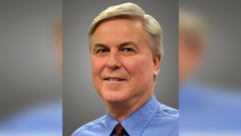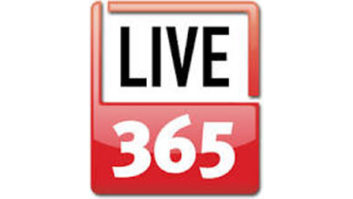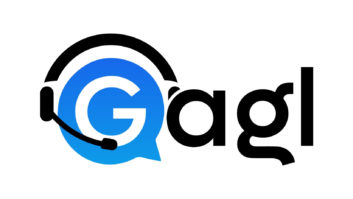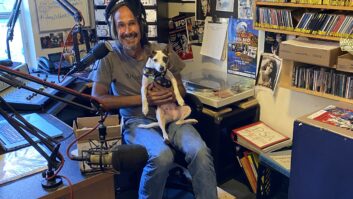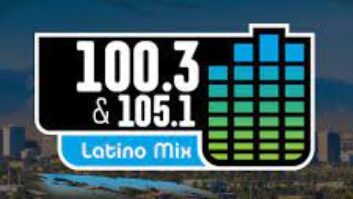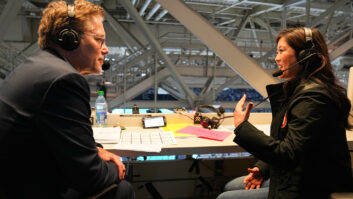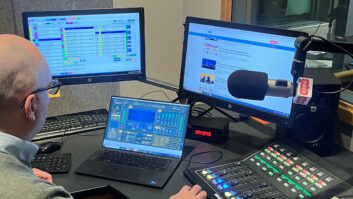What’s happening at 700MHz?
Feb 1, 2009 12:00 PM, By Kevin McNamara

By now most Americans know about the eminent shutdown of analog TV on Feb. 17, 2009. There are still some challengers to extend the date, but it seems likely we have seen the last of analog broadcasts. Low-power TV stations will be permitted to stay on-air until the new licensee (for the specific spectrum) commences operations in a particular market.
The newly cleared spectrum is perhaps some of the most desirable largely due to the fact that radio frequency in this lower range travels farther and tends to penetrate buildings more efficiently. Due to the large demand in broadband wireless services, the FCC made available the spectrum currently occupied by channels 52 through 69 (the UHF band).
In order to make the best use of the spectrum, the frequencies now occupied by these channels were divided into several blocks. Each block defines not only a specific amount of bandwidth, but also associates certain service areas, i.e. metro, regional or national (typically the lower 48) areas the licensee can operate. Ultimately, these blocks were made available to interested operations through a series of well publicized auctions. The auctions for this spectrum are essentially completed with the exception of one block. In all, about $20 billion were raised, the most in spectrum auction history.
I will breakdown what is going to happen on these blocks; however, keep in mind that not all licensees have announced the definitive plans and technology platforms they propose to deploy on this spectrum.
Auction 44
Auction for the Lower 700MHz Band was completed in late 2002. It was comprised of 740 licenses, 736 for MSA/RSA (smaller metro areas) and six EAG (larger regional areas). The licenses are designated Blocks C and D respectively. Block C winners get 2 � 6MHz, while block D winners get 1 � 6MHz allocations.
MSA/RSA Block C: (710-716, 740-746MHz)
EAG Block D: (716-722MHz)
The FCC defines the permissible use for these frequencies as �Flexible fixed, mobile and broadcast uses, including mobile and other digital new broadcast operations, fixed and mobile wireless commercial services (including FDD- and TDD-based services) as well as fixed and mobile wireless uses for private, internal radio needs. Could also include two-way interactive, cellular and mobile television broadcasting services.�
Take particular note to the last sentence; it pretty much sums up what one of the primary services that Qualcomm, the major winner, intends to deploy. Their plan is to offer wireless television services using Mediaflo technology. In fact, they already have the service running in many markets that don’t have an existing channel 55 operating. They intend to turn up other markets once those remaining analog stations leave the air. Other licensees are planning similar offerings as well as alternative broadband access.
Interestingly, only 484 licenses were bid and awarded; 256 licenses were retained by the FCC.
Auction 49
Auction 49 was essentially a re-auction for those unsold allocations. The auction was completed in June 2003. The end result was that all of the remaining licenses were sold, albeit the total value received for this spectrum was nearly twice what was paid in the previous sale.
What’s happening at 700MHz?
Feb 1, 2009 12:00 PM, By Kevin McNamara
Auction 73
The FCC left the best spectrum, basically the rest of the UHF TV band, for last. March 18, 2008, marked the end of an auction that lasted almost two months and yielded nearly $20 billion. These allocations were divided into five blocks (A-E):
- Block A: 12MHz (698-704/728-734MHz)
- Block B: 12MHz (704-710/734-740MHz)
- Block E: 6MHz (722-728MHz)
- Block C: 22MHz (746-757/776-787MHz)
- Block D: 10MHz (758-763/788-793MHz)
There are a total of 1,099 licenses offered under this auction:
- Block A: 176 Economic Area (EA) licenses
- Block B: 734 Cellular Market Area (CMA) licenses
- Block E: 176 Economic Area (EA) licenses
- Block C: 12 Regional Economic Area Grouping (REAG) licenses
- Block D: 1 nationwide license (subject to conditions respecting a public/private partnership)
In the end, 1,090 licenses were won, however all of the bidding for block D did not meet reserves. The primary reason being a requirement placed on bidders to provide a certain amount of access for public service use. Bidders perhaps felt the requirement limited their commercial use of the spectrum.
The permissible uses for these blocks are similar to that specified in the lower band; however, the wider bandwidth, particularly block C, will permit the deployment of next generation wireless services called 3GPP LTE. LTE is an acronym for long-term evolution and is a technology that represents the transition into the future 4G platform. LTE can provide download speeds of 100Mb/s, and will therefore be a natural platform capable of telephone, radio, television and Internet access applications.
The major winner of the auction, including block C licenses that cover all of the lower 48 states, is Verizon, who has announced its intentions to deploy LTE on the spectrum. AT&T, the next largest bidder, announced similar plans. One catch with the C block is that the licensee must operate an open platform providing access to any application from any device. This requirement came out of a pre-bid petition to the FCC which was subsequently granted.
Other platforms that could materialize on these frequencies by smaller operators include Wimax and UMB (Ultra Mobile Broadband), all competing technologies to LTE.
No matter which technologies surface, one thing is certain: You will start to see a new generation of broadband wireless device on the market, possibly by the end of 2009.
More on the ramifications of the 700MHz changes in the February Podcast atRadioMagOnline.com.
McNamara is president of Applied Wireless, Cape Coral, FL.
Radio Mag Online Podcast for February 2009
Radio Mag Online Podcast for February 2009: Hear from Chip Formby and the use of windpower at KPAN; Mitch Lazarus of Fletcher, Heald and Hidreth discusses the potential pains for wireless mic users with the DTV transition; and Mike Starling explains the work at NPR Labs that benefits blind radio listeners….




